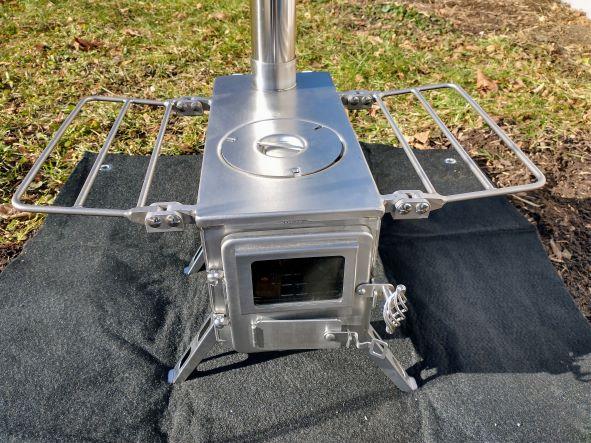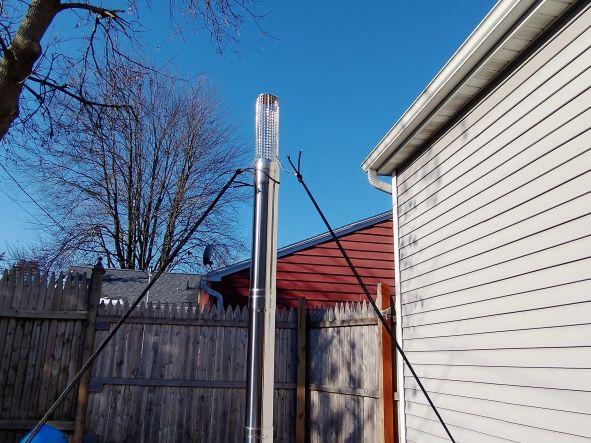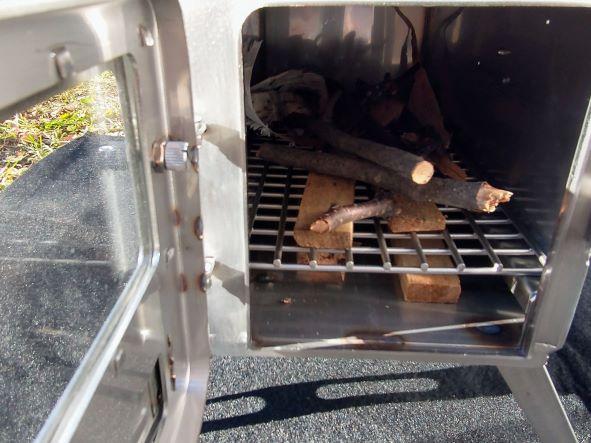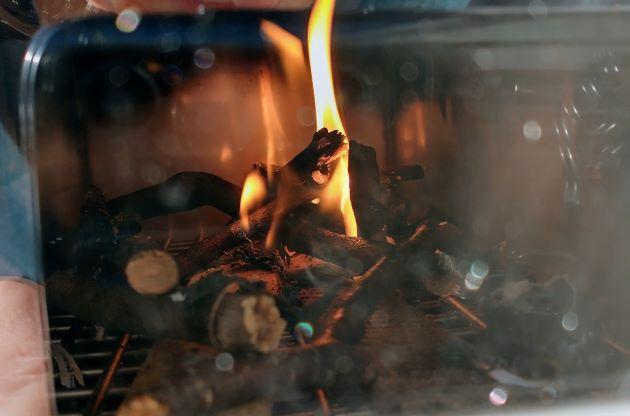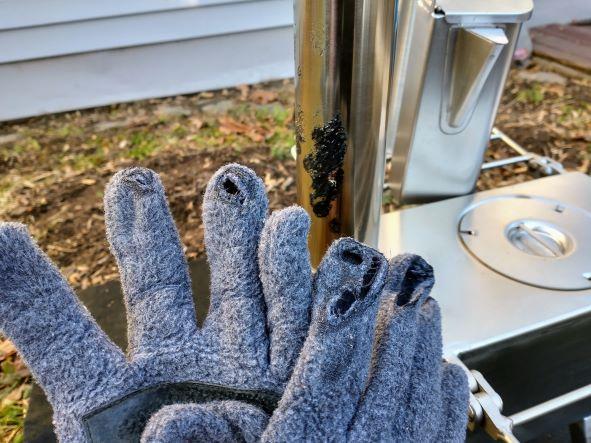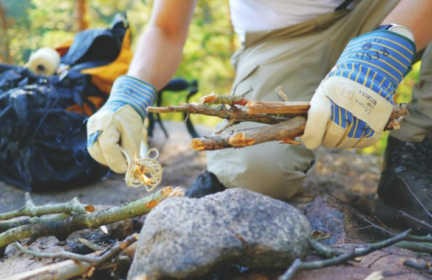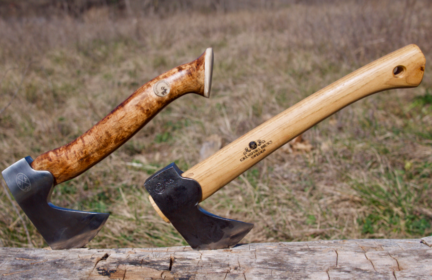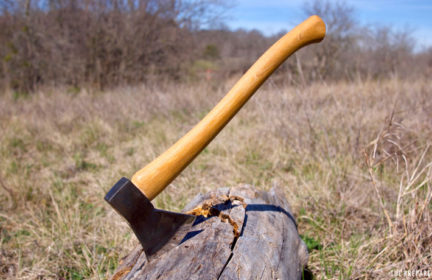Winnerwell Nomad camp stove
One of the gaps in my prepping was that I never learned how to start a fire, keep it lit, use its warmth, put it out, and manage the ashes. Someone here mentioned the Winnerwell Nomad camp stove (thank you), so I bought it and recently used it for the first time. I bought the small version, along with a fireproof mat and the “water tank” that nestles against the chimney.
It’s compact and easy to assemble. I liked the three eyelets on the spark arrestor for attaching guy lines to tent stakes to keep the chimney steady in the wind. I used my own cords and tent stakes, not ones from the company.
Its small size meant that the only wood able to fit in it was kindling that I chopped in half or dried stems of a shrub. I need to figure out how to shorten standard size split fireweed. I tried using my Sawzall, but the firewood bounced around, so I quit.
I got interrupted and had to stop the process the first time and start it later. The water in the tank didn’t get super hot during the time I spent with the stove, but it was hot enough to make tea.
I made the mistake of apparently touching the chimney while wearing synthetic fiber gloves and burned holes in the fingertips. I have a melted mess on the back of the chimney. It’s broken in now! I did not burn myself. I learned these are not the gloves to wear while using a wood stove.
I think that I will like the stove. I need more practice lighting fires and keeping them lit. I need to figure out how to reduce the size of standard firewood to fit in the stove. I need to figure out how long it takes to heat water, maybe cook an egg, or heat soup. I need to obtain more wood. I need to figure out how to anchor the guy lines if the ground is frozen. Maybe retaining wall pavers? Then I need to keep three of them where they don’t freeze and get covered by snow. I need to figure out what to do with the ashes.
Once I get more comfortable with this controlled fire, I plan to practice making a campfire in a portable metal fire pit. One step at a time.
-
Comments (13)
-
